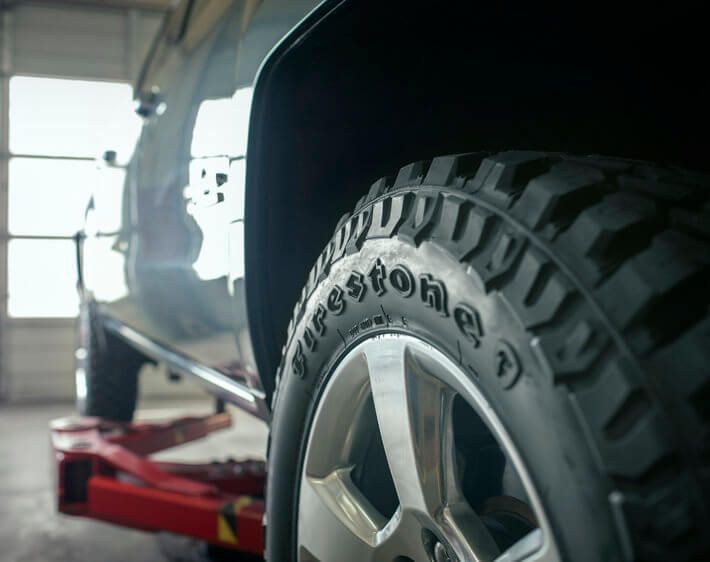Navigating snowy or icy roads is not the time to be wondering about the difference between snow tires and regular tires. Give your tires some thought before winter weather hits!
The right tires can improve the safety and performance of your vehicle. Firestone Complete Auto Care, the nation's leading tire provider for more than a century, is here to explain the difference between snow tires and regular tires, and help you determine which tires are right for your vehicle when the temperature drops.
Snow Tires Are Designed for Winter
Snow tires are uniquely designed to improve traction in snowy and icy conditions. Regular tires are not. There are three main features that set winter tires apart from regular tires: rubber composition, tread depth and pattern, and biting edges.
Sure, features like all-wheel-drive, anti-lock braking, and traction control help make the most of your vehicle’s available traction, but they don’t create traction. That’s your tires' job. Specially designed snow tires work with the other features of your car to combat the combination of cold temperatures, ice, and snow.
Consumer Reports agrees! They report, "Our test-track observations lead us to advise that using snow tires provides the best grip and assurance for going, stopping, and cornering no matter what you drive: all-wheel drive, front-drive, or rear-drive."
Regular Tires Won't Cut It in the Cold
Why aren’t regular tires up to the task of protecting you and your car in wintry weather?
As we mentioned earlier, colder temperatures cause the tread rubber of a regular tire to get stiffer and less able to conform to the irregularities of even a dry road. When you add ice and snow to the mix, regular tires have an even harder time gaining traction because the road’s irregularities are now filled in and smoothed over by the snow and ice.
Also, when a frozen surface of ice and snow comes under pressure from a tire rolling across it, heat and friction melt the surface of the ice and produce a thin film of water. This water film makes icy roads especially slippery.
Another thing that makes roads slippery? Slush. When the air temperature exceeds 32°F, the surface of the ice gets slushy. As the water film and slush deepen, your tires’ grip gets worse, making slippage more likely.
When you’re faced with these tough winter road conditions, a regular tire won’t give you the same grip and handling that a snow tire could.
Snow Tires Aren't Right for Every Driver
If you experience temperatures where you live that consistently fall to the low 40s or below, talk to a tire tech about installing winter tires, like Winterforce or Blizzak.
If temperatures in your area aren’t in that range, then winter tires might not be right for your vehicle. The winter tire experts at your local Firestone Complete Auto Care can help you choose which option is best for your vehicle.
Keep in mind that winter tires shouldn’t be used in the summer months, since the tires’ compounds might be susceptible to rapid treadwear. Also, winter tires should be installed on all wheels, not just the back or front axle.
Turn to the winter tire experts at your local Firestone Complete Auto Care before the harshest winter weather hits for help selecting the right tire for your car and climate. Compare winter tires online and get a free tire quote today! Don't forget to ask your tech about financing those tires. Visit CFNA for financing details.




